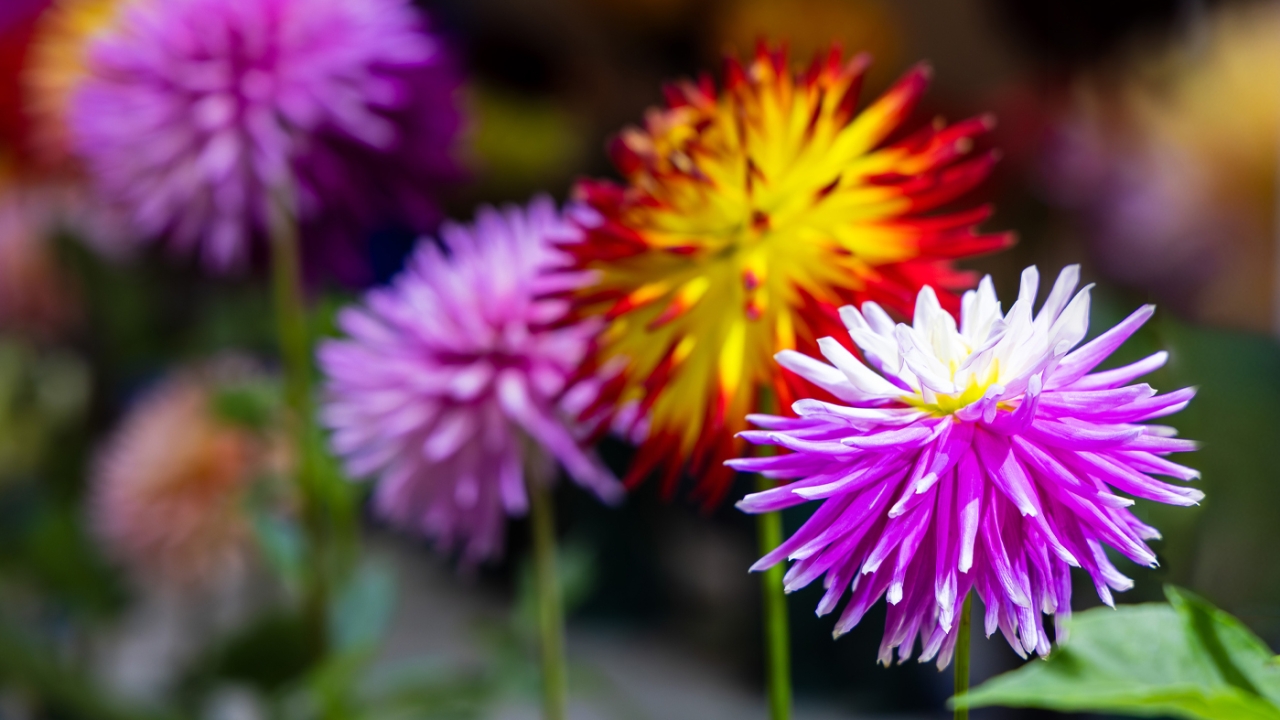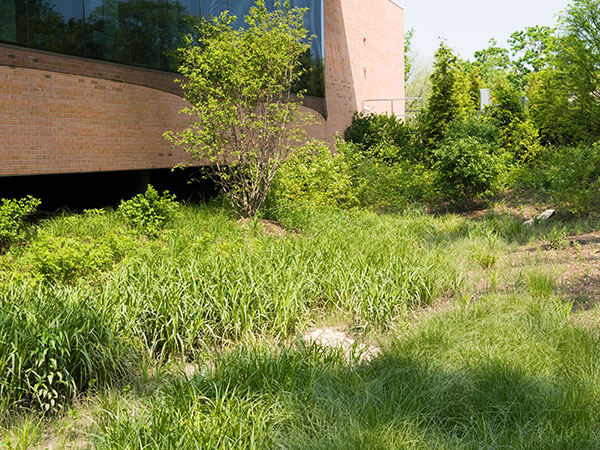

Smart Gardener
Rain Gardens
The thunderstorms this past May are just a memory now, but they left many homes and streets in northeastern Illinois with standing water. The rainfall resulted in the wettest May on record at Chicago O’Hare (9.51 inches) and Midway (7.65 inches) airport stations. For three consecutive years now, the O’Hare station has broken total precipitation records for the month of May.
A 1-inch rainfall on an acre produces about 27,000 gallons of water and it must flow somewhere. Impermeable surfaces such as roofs, sheds, patios, sidewalks, and streets shed rain to surrounding earth and sewers. Although a lawn would seem like a good permeable surface to catch rainwater, grass roots are only 3 to 4 inches deep. When the soil is dry, the water initially runs right off the lawn into adjacent areas. As cities and suburbs continue to develop and build structures and roads, there is less permeable space for water to enter the ground and, as a result, there is more flooding in many areas.
Allowing rainwater into the soil helps recharge underground aquifers and reduces surface runoff (and pollutants) that would otherwise end up in streams and rivers. One way to capture excess water on your property is to plant a rain garden. Rain gardens are basically shallow depressions in the ground filled with topsoil, sand, and compost. Picture a low spot where water can gather and infiltrate the soil. Rain gardens are sometimes located where water is collected from a downspout and directed away from the house. They’re typically planted with native perennials as well as nonnative perennials and grasses with deep roots.
Rain gardens are basically shallow depressions in the ground filled with topsoil, sand, and compost.


Design
The rain garden philosophy—create a landscaped basin where rainwater can gently seep back into the earth instead of into a basement, garage, or sewer—is good, but a common complaint is that rain gardens can look messy. Designing a rain garden can be a challenge. The site can be a little too dry or too wet for certain plants. Determine where and how the water flows on your property and the quality of soil as first steps in selecting the location and the plants. The space should look intentionally designed—it’s not necessarily meant to look like a natural area unless that is the look you want. Edging a rain garden with boulders, permeable pavers, or gravel will help define the space and neatly separate it from the lawn.
Plant Selection
Rain gardens can be placed just about anywhere—sun or shade—as long as you choose the appropriate plants. Rainwater generally soaks into the ground in 24 hours or so, depending on the intensity and frequency of the storms. With that in mind, know that rain gardens are not always moist. You need not use all native plants but you should give consideration to the type of plants. Some are rhizomatous and form large mats and should only be used in large landscapes, while others form well-behaved clumps.
Create a rain garden as you would any other perennial border. Select plants based on their ornamental qualities—flower and foliage color, form, texture, and seasonal interest—and plant them in drifts or groupings. Choose plants that not only tolerate occasional flooding, but those that can also handle the hot, dry months of July through September.
Mesic-prairie plants such as big bluestem, black-eyed Susan, and compass plant are native plants that can tolerate wet soil for short periods. Mesic soils are considered “medium-moist soils” and comparable to average well-drained garden soil, while wet-mesic soils are medium moist to soggy most of the year.
Herbaceous native plants for rain gardens in sun include swamp milkweed, common tussock sedge, blue flag iris, wild bergamot, marsh blazing star, rosin weed, spiderwort, switch grass, Joe Pye weed, and cup plant. If an area in your garden is continually moist, you’ll want to choose plants that tolerate wet soil for long periods.
Birds and Bees
Creating rain gardens is an important way to bring sustainable practices to our gardens while attracting beneficial insects and birds. Many native herbaceous perennials provide pollen, and some serve as specific host plants for moths and butterflies. Once established, native plants require little irrigation or fertilization. Think of rainwater as a resource, not a waste product.


Shady Sites
Designing a rain garden for shade is a matter of picking the right plants. For example, common mountain mint and showy black-eyed Susan (Rudbeckia fulgida) grow in full sun but will also grow in light shade. Brown fox sedge (Carex vulpinoidea) and palm sedge are some of the native sedges that perform in moist woodlands. Canadian anemone, green dragon, jack-in-the-pulpit, Virginia bluebells, false and smooth Solomon’s seal, and marsh marigolds are other native woodland perennials that can handle wet-mesic soil. Native shrubs that tolerate shady floodplain conditions include paw paw, bottlebrush buckeye, smooth hydrangea (Hydrangea arborescens), red-twig dowood, button bush, spicebush, and nannyberry (Viburnum lentago).
Rain Garden Care
Rain gardens often require less care than other types of perennial beds. There is no need to buy bags of mulch, especially if the perennials are placed closer together when planting. As they fill out, they will help deter weeds. If you are planting a rain garden this fall, provide irrigation if the season is dry. A helpful tool is a triangular hoe to remove weeds from between the plants the first season. Cut the perennials down in spring, leaving some stems standing 6 inches tall for tiny native bees that will lay their eggs in them. If the clippings are chopped fine, you can leave them as a mulch that will break down quickly.
Nina Koziol is a garden writer and horticulturist who lives and gardens in Palos Park, Illinois.

